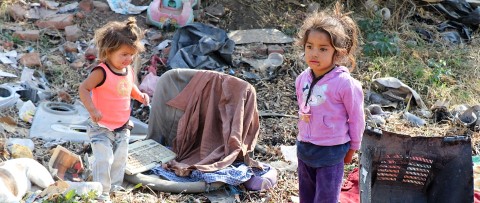
You can find children suffering from poverty in every corner of the world, from Honduras to Zambia. As widespread as the problem, so are the reasons that each population finds themselves struggling. In some cases, it’s the harsh terrain that leads to a lack of employment and malnutrition, while in others, it’s years of gang violence and exposure to drugs that drive entire communities into addiction and despair.
Negative early experiences like exposure to drugs, malnutrition and even a simple lack of parental support can influence a child's ability to cope with stress, affect their health and leave them falling behind in school. Poverty forces children to react to their environment instead of planning for a brighter future. They wonder, “Where will I get my next meal?” or, “ How can I help my family?” or, “Am I safe here?” This kind of short-term thinking traps children into a cycle of poverty that can last for generations.
Learn about our programs

At Children International, we believe children and youth are the key to creating lasting change in the communities we serve. That’s why we focus our programs and efforts on children between the ages of 3-24 and their families. With your help, a sponsored child has access to life-changing educational programs, health care and dental benefits, life-skills training, job-skills workshops, communities centers and more.
Sponsor a child MORE WAYS TO HELP

Learn and share the facts about how poverty affects health, education, employment and more.
Learn poverty factsThe poverty numbers are staggering but we put them in perspective in a factual way that seems solvable.
Learn the facts about global povertyAt Children International, we believe ending poverty starts with children. Through our life-changing community centers, education and health programs, life-skills and empowerment workshops, children are given the opportunity to envision a future they've never seen before. They are given the chance to put an end to the generational poverty that has burdened those before them and truly break the cycle of poverty for themselves and their communities.
Data and statistics regarding national and global poverty come from a variety of sources. Some numbers are gathered by governmental departments, while other data comes from surveys, research and reports from reliably sourced institutions like the United Nations and the World Bank.


The poverty line, also known as the “poverty threshold,” is the minimum level of income deemed adequate to survive within a given country. The poverty line, of course, varies widely among communities inside a nation, and the line is different for each country, determined largely by their basic cost-of-living and the percentage of people living below that minimum. The actual calculation for each country comes from finding the total cost of all essential resources that an average human adult consumes in one year.
In 2015, when the global poverty line was set at $1.90 per day, the World Bank found that 10% of the world’s population lived in extreme poverty. In 2022, the World Bank updated the threshold to $2.15 per day. While many in the philanthropic community expected this to result in increased poverty numbers, the latest estimates have dropped. Today, 8% of the global population lives in extreme poverty.*
*Source: World Bank.